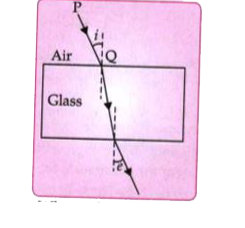In the diagram below, PQ is a ray of light incident on a rectangular glass block.
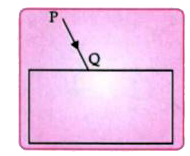
Copy the diagram and complete the path of the ray of light through the glass block. In your diagram, mark the angle of incidence by letter 'i' and the angle of emergence by the letter 'e'.
Topper's Solved these Questions
- SAMPLE PAPER 2011BOOK - ICSECHAPTER - SAMPLE PAPER 2011EXERCISE - SECTION-II
41 Videos
- SAMPLE PAPER 2 (PHYSICAL EDUCATION)BOOK - ICSECHAPTER - SAMPLE PAPER 2 (PHYSICAL EDUCATION)EXERCISE - MULTIPLE CHOICE QUESTIONS
50 Videos
- SAMPLE PAPER 2012BOOK - ICSECHAPTER - SAMPLE PAPER 2012EXERCISE - SECTION-II
43 Videos
Similar Questions
In the diagram below, PQ is a ray of light incident on a rectangular glass block.

How are the angles i and 'e' related to each other?
View Solution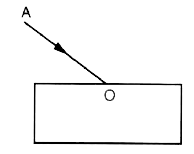
In the adjacent diagram, AO is a ray of light incident on a rectangular glass slab.
(a) Complete the path of the ray till it emerges out of the slab.
(b) In the diagram, mark the angle of incidence (i) and the angle of refraction (r) at the first interface. how is the refractive index of glass related to the angles i and r ?
(c) Mark angle of emergence by the letter e. how are the angles i and e related ?
(d) Which two rays are parallel to each other ? Name them
(e) Indicate in the diagram the lateral displacement between the emergent ray and the incident ray. state one factor that affects the lateral displacement.
View SolutionA ray of light falls normally on a rectangular glass slab.
Draw a ray diagram showing the path of the ray till it emerges out of the slab.
View SolutionThe diagram alongside shows a light source P embedded in a rectangular glass block ABCD of critical angle 42∘. Complete the path of the ray PQ till it emerges out of the block. [Write necessary angles.]
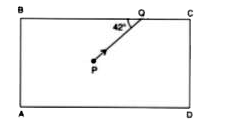
View Solution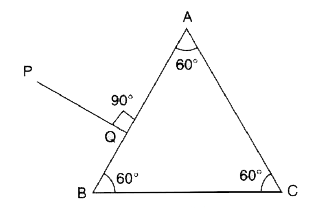
Copy the diagram given below and complete the path of the light ray till it emerges out of the prism. The critical angle of glass is 42∘. In your diagram mark the angles wherever necessary.
View SolutionThe following diagram shows a 60∘,30∘,90∘ glass prism of critical angle 42∘. Copy the diagram and complete the path of incident ray AB emerging out of the prism marking the angle of incidence on each surface.
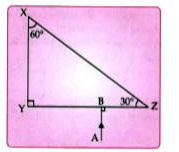
View SolutionWhen a ray of light passes from air to glass, for what angle of incidence, the ray will not be deviated?
View SolutionA ray of light travels from water to air as shown in the diagram given below:
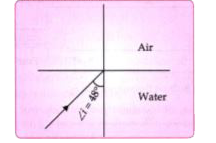
Copy the diagram and complete the path of the ray. Given the critical angle for water is 48∘.
View SolutionIn figure, a ray of light PQ is incident normally on the hypotenuse of an isosceles right angled prism ABC. (a) complete the path of the ray PQ till it emerges from the prism. Mark in the diagram the angle wherever necessary. (b) what is the angle of deviation of the ray PQ ?
(c) Name a device in which this action is used.
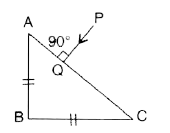
View SolutionDraw a neat diagram for the passage of a ray of light through an equilateral glass prism, showing clearly
(a) angle of incidence (b) angle of emergence ( c ) angle of deviation (d) angle of prism
View Solution

